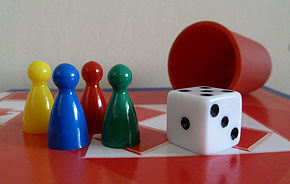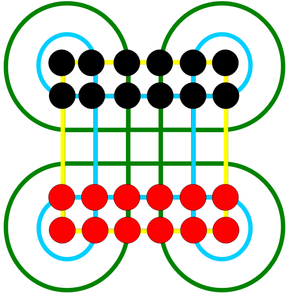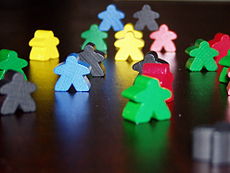
- Tabletop games
- Board games
- Tile-based games
- Turn-based games.html
- Abstract strategy games
- card games
- Connection games
- Mancala games
- Paper-and-pencil games
- Word games



This page explains commonly used terms in board games in alphabetical order. For a list of board games, see List of board games. For terms specific to chess, see Glossary of chess. For terms related to chess problems, see Glossary of chess problems.
 The five Platonic solid polyhedrals, from left: tetrahedron (d4), cube (d6), octahedron (d8), dodecahedron (d12), icosahedron (d20)
The five Platonic solid polyhedrals, from left: tetrahedron (d4), cube (d6), octahedron (d8), dodecahedron (d12), icosahedron (d20) Equipment for Ludo: four Ludo pieces, a die, a dice cup, a Ludo board
Equipment for Ludo: four Ludo pieces, a die, a dice cup, a Ludo board Surakarta gameboard and initial setup
Surakarta gameboard and initial setup Wooden meeples from the Carcassonne board game
Wooden meeples from the Carcassonne board game